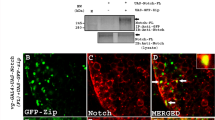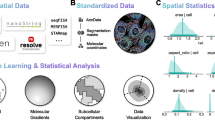Abstract
FERM domain-containing proteins are involved in diverse biological and pathological processes, including cell-substrate adhesion, cell-cell adhesion, multicellular development, and cancer metastasis. In this study, we determined the functions of FrmB, a FERM domain-containing protein, in the cell morphology, cell adhesion, and multicellular development of Dictyostelium cells. Our results show that FrmB appears to play an important role in regulating the size of developmental structures. frmB null cells showed prolonged aggregation during development, resulting in increased size of developmental structures, such as mounds and fruiting bodies, compared to those of wild-type cells, whereas FrmB overexpressing cells exhibited decreased size of developmental structures. These results suggest that FrmB may be necessary for limiting the sizes of developmental structures. Loss of FrmB also resulted in decreased cell-substrate adhesion and slightly increased cell area, suggesting that FrmB had important roles in the regulation of cell adhesion and cell morphology. These studies would contribute to our understanding of the intertwined and overlapped functions of FERM domain-containing proteins.
Similar content being viewed by others
References
Bosanquet, D.C., Ye, L., Harding, K.G., and Jiang, W.G. 2014. FERM family proteins and their importance in cellular movements and wound healing (review). Int. J. Mol. Med. 34, 3–12.
Breshears, L.M., Wessels, D., Soll, D.R., and Titus, M.A. 2010. An unconventional myosin required for cell polarization and chemotaxis. Proc. Natl. Acad. Sci. USA 107, 6918–6923.
Bretscher, A., Edwards, K., and Fehon, R.G. 2002. ERM proteins and merlin: integrators at the cell cortex. Nat. Rev. Mol. Cell. Biol. 3, 586–599.
Brock, D.A. and Gomer, R.H. 1999. A cell-counting factor regulating structure size in Dictyostelium. Genes Dev. 13, 1960–1969.
Brock, D.A., Hatton, R.D., Giurgiutiu, D.V., Scott, B., Jang, W., Ammann, R., and Gomer, R.H. 2003. CF45-1, a secreted protein which participates in Dictyostelium group size regulation. Eukaryot. Cell 2, 788–797.
Brock, D.A., van Egmond, W.N., Shamoo, Y., Hatton, R.D., and Gomer, R.H. 2006. A 60-kilodalton protein component of the counting factor complex regulates group size in Dictyostelium discoideum. Eukaryot. Cell 5, 1532–1538.
Chisholm, R.L. and Firtel, R.A. 2004. Insights into morphogenesis from a simple developmental system. Nat. Rev. Mol. Cell Biol. 5, 531–541.
Gomer, R.H. 1999. Gene identification by shotgun antisense. Methods 18, 311–315.
Gomer, R.H., Jang, W., and Brazill, D. 2011. Cell density sensing and size determination. Dev. Growth Differ. 53, 482–494.
Jeon, T.J., Lee, D.J., Lee, S., Weeks, G., and Firtel, R.A. 2007. Regulation of Rap1 activity by RapGAP1 controls cell adhesion at the front of chemotaxing cells. J. Cell Biol. 179, 833–843.
Jeon, T.J., Lee, S., Weeks, G., and Firtel, R.A. 2009. Regulation of Dictyostelium morphogenesis by RapGAP3. Dev. Biol. 328, 210–220.
Loomis, W.F. 2015. Genetic control of morphogenesis in Dictyostelium. Dev. Biol. 402, 146–161.
McClatchey, A.I. 2003. Merlin and ERM proteins: unappreciated roles in cancer development? Nat. Rev. Cancer 3, 877–883.
Mun, H., Lee, M.R., and Jeon, T.J. 2014. RapGAP9 regulation of the morphogenesis and development in Dictyostelium. Biochem. Biophys. Res. Commun. 446, 428–433.
Octtaviani, E., Effler, J.C., and Robinson, D.N. 2006. Enlazin, a natural fusion of two classes of canonical cytoskeletal proteins, contributes to cytokinesis dynamics. Mol. Biol. Cell. 17, 5275–5286.
Patel, H. and Brunton, V.G. 2009. Loss of FrmA leads to increased cell-cell adhesion and impaired multi-cellular development of Dictyostelium cells. Cell Mol. Life Sci. 66, 145–155.
Patel, H., Konig, I., Tsujioka, M., Frame, M.C., Anderson, K.I., and Brunton, V.G. 2008. The multi-FERM-domain-containing protein FrmA is required for turnover of paxillin-adhesion sites during cell migration of Dictyostelium. J. Cell Sci. 121, 1159–1164.
Plak, K., Pots, H., van Haastert, P.J., and Kortholt, A. 2016. Direct interaction between TalinB and Rap1 is necessary for adhesion of Dictyostelium cells. BMC Cell Biol. 17, 1.
Rosengarten, R.D., Santhanam, B., Fuller, D., Katoh-Kurasawa, M., Loomis, W.F., Zupan, B., and Shaulsky, G. 2015. Leaps and lulls in the developmental transcriptome of Dictyostelium discoideum. BMC Genomics 16, 294.
Schroeder, S., Kim, S.H., Cheung, W.T., Sterflinger, K., and Breuil, C. 2001. Phylogenetic relationship of Ophiostoma piliferum to other sapstain fungi based on the nuclear rRNA gene. FEMS Microbiol. Lett. 195, 163–167.
Siu, C.H., Harris, T.J., Wang, J., and Wong, E. 2004. Regulation of cell-cell adhesion during Dictyostelium development. Semin. Cell Dev. Biol. 15, 633–641.
Siu, C.H., Sriskanthadevan, S., Wang, J., Hou, L., Chen, G., Xu, X., Thomson, A., and Yang, C. 2011. Regulation of spatiotemporal expression of cell-cell adhesion molecules during development of Dictyostelium discoideum. Dev. Growth Differ. 53, 518–527.
Tsujioka, M., Yoshida, K., Nagasaki, A., Yonemura, S., Muller-Taubenberger, A., and Uyeda, T.Q. 2008. Overlapping functions of the two talin homologues in Dictyostelium. Eukaryot. Cell 7, 906–916.
Tuxworth, R.I., Stephens, S., Ryan, Z.C., and Titus, M.A. 2005. Identification of a myosin VII-talin complex. J. Biol. Chem. 280, 26557–26564.
Tuxworth, R.I., Weber, I., Wessels, D., Addicks, G.C., Soll, D.R., Gerisch, G., and Titus, M.A. 2001. A role for myosin VII in dynamic cell adhesion. Curr. Biol. 11, 318–329.
Author information
Authors and Affiliations
Corresponding author
Additional information
Supplemental material for this article may be found at http://www.springerlink.com/content/120956.
Electronic supplementary material
Rights and permissions
About this article
Cite this article
Kim, H., Lee, MR. & Jeon, T.J. Loss of FrmB results in increased size of developmental structures during the multicellular development of Dictyostelium cells. J Microbiol. 55, 730–736 (2017). https://doi.org/10.1007/s12275-017-7221-x
Received:
Revised:
Accepted:
Published:
Issue Date:
DOI: https://doi.org/10.1007/s12275-017-7221-x




